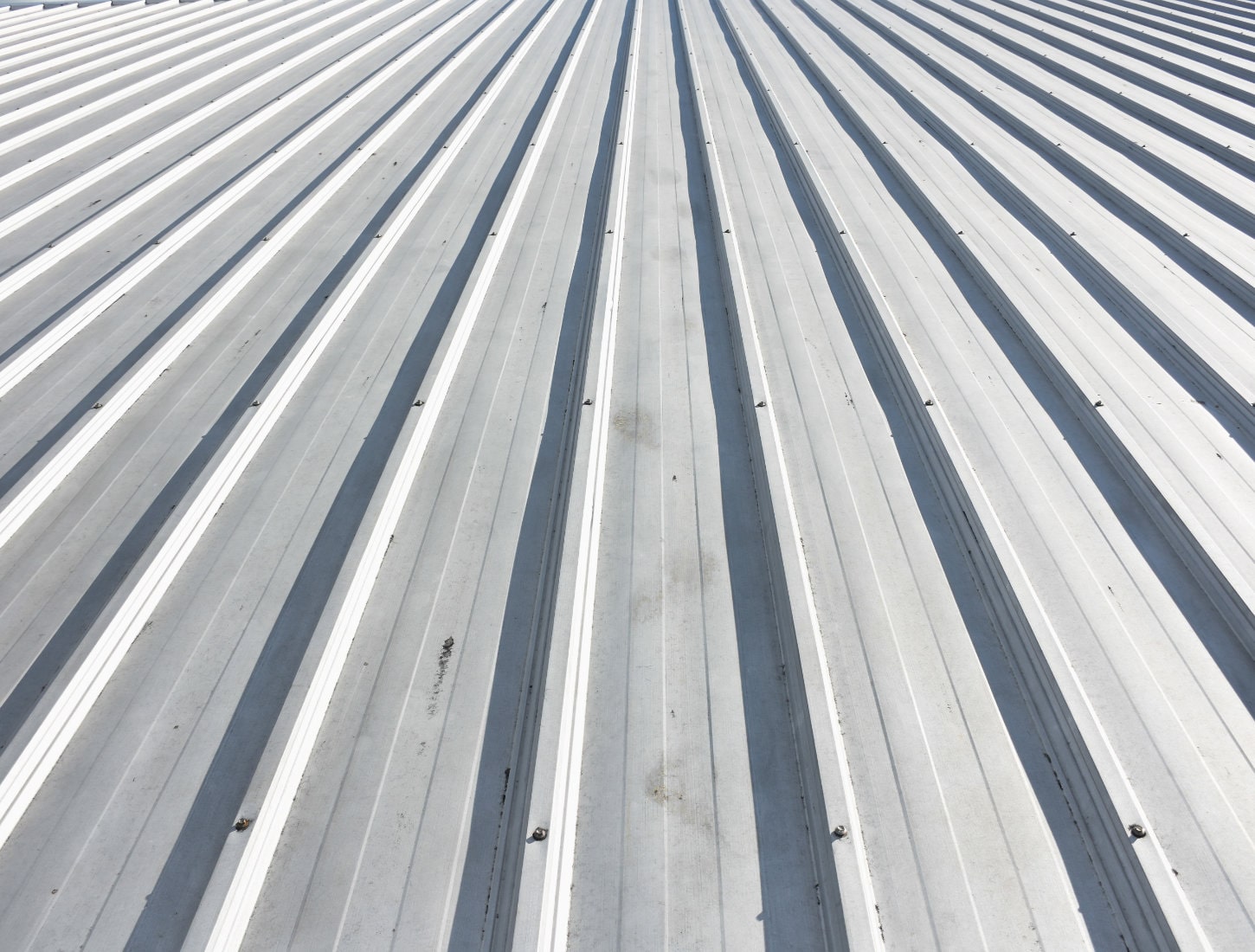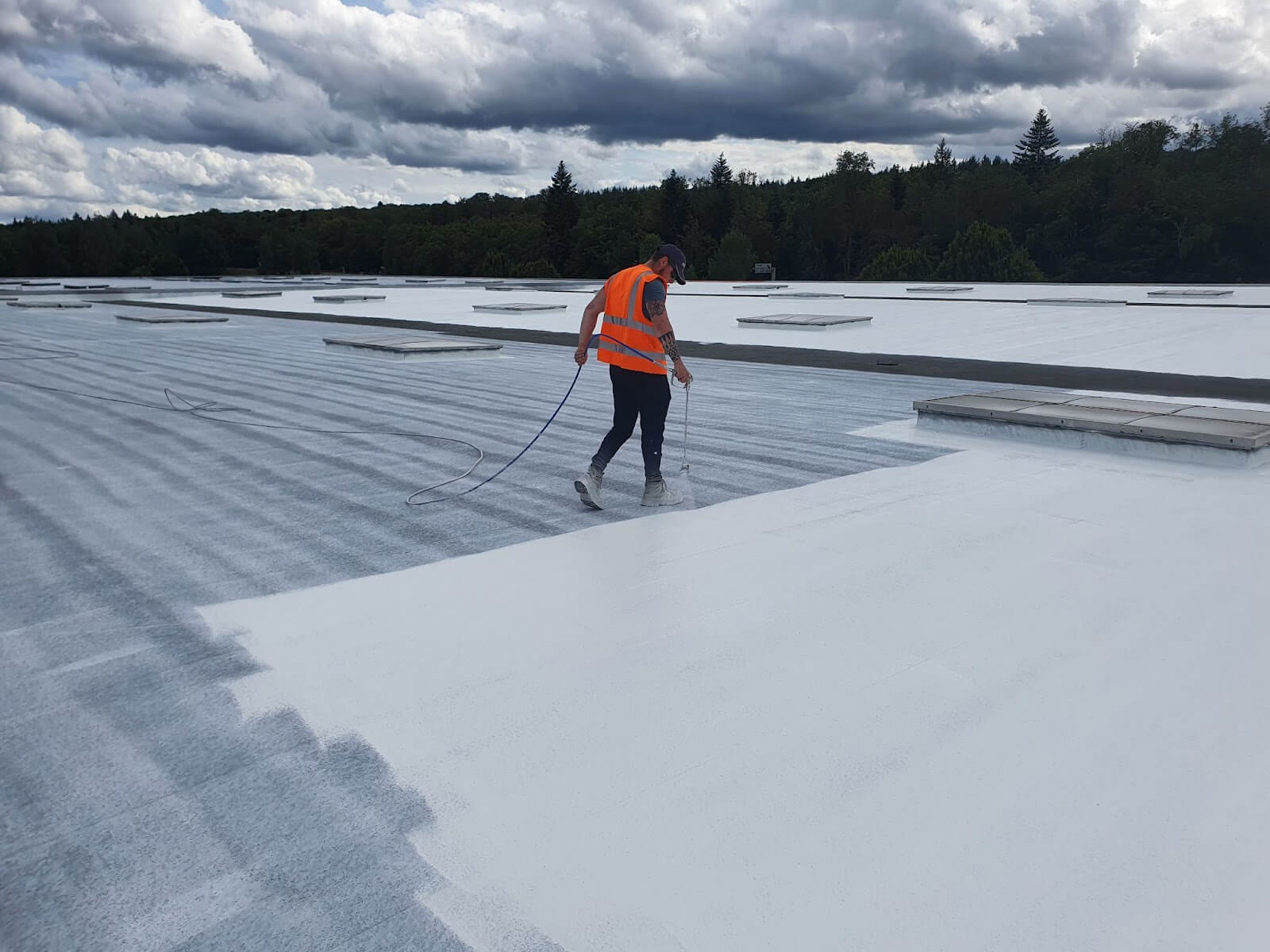Primarily offered in a professional context for warehouses and industrial buildings, steel trough roofs are widely used in mainland France for waterproofing flat roofs. Praised for its low cost and simple installation, steel roofing offers good value for money. However, waterproofing can sometimes be lacking, and it may be necessary to turn to complementary solutions such as liquid waterproofing resin or a complete overhaul of the steel trough system. It is also possible to improve thermal performance by applying a cool roof coating.
What is a steel pitched roof?
Steel pitched roofs are mainly used for flat roofs. This roofing system is based on ribbed steel sheets bonded together. In most cases, this roofing system is used on roofs with a slope of between 5% and 15%.
As they are made of steel plates only, with no additional technical elements, steel pitched roofs are very inexpensive, and therefore represent good value for money.

What are the advantages and disadvantages of a steel pitched roof?
On the plus side, this solution is economical, easy to install and can be easily adapted to most commercial buildings. In fact, flat roofs account for the majority of warehouses and storage areas for companies. As a result, very large surfaces can be fitted in a short space of time and at low cost, thanks to steel pan roofing.
On the other hand, this type of roofing also has a number of drawbacks. First and foremost, the steel sheets used for roofing are thin. Because of their thinness, they can quickly become damaged. The roof is exposed to the elements, pollution and other external hazards. In a short space of time, if the steel is of poor quality, the overall watertightness of the steel pan roof can be compromised. At the same time, the watertightness of this cladding is not optimal, as the joints between the plates can let water through. Finally, steel sheets have poor thermal performance.
💡 O ur other practical articles on waterproofing solutions
How to improve the watertightness of a steel pan roof?
Since waterproofing is the main shortcoming of a steel pan roof, it's in the interests of both professionals and private individuals to optimize this point. There are two ways of doing this.
The first is to apply a liquid waterproofing system. This takes the form of a resin that is applied to the entire surface of the steel pan. When dry, the resin forms an additional uniform protective layer over the entire roof. In this way, joints that used to let water through are no longer a problem.
The second option for improving the watertightness of a steel pan roof is to cover the entire roof with insulation. In this case, the steel pan serves as a support for an insulating overlay. In this case, you can turn to the various conventional insulating materials on the market. The insulating material is applied directly to the steel plates. A new overcoat is then applied to the entire structure to act as a waterproofing solution. This overcoat generally consists of new steel panels. This double protection of the roof ensures that the structure remains watertight.
Resin has the advantage of being a cost-effective solution, while insulation helps to reduce the building's energy bills over the long term. What's more, both solutions can be used directly on the roof, leaving the professional free to use the building while the work is in progress.
How can I improve the thermal performance of steel cladding?
Steel sheets tend to let in the cold in winter and absorb heat in summer. To optimize this performance, the roof can be thermally insulated. This will limit energy losses in winter.
In summer, however, insulation is not enough. In this case, a cool roof reflective coating can be applied. This solution involves applying a white, heat-resistant paint to the entire surface of the steel deck. The properties of this paint ensure that the sun's rays are reflected, protecting the roof from absorbing heat and distributing it to the rest of the structure. As an added bonus, reflective paint reduces the surface temperature of the steel pan.

By combining these two methods, you can significantly and sustainably improve the energy performance of your steel pan roof.
To find out more :